The truth about the wolf
 Bashny.Net
Bashny.Net
31 phot and text. Look!
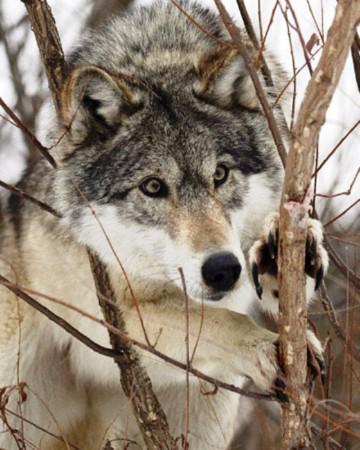
So. 1)
What do people know about the wolves? The fact that they are fierce and dangerous, treacherous and insidious. What they should be destroyed. So think of wolves, those who of them did not know anything. In fact, wolves rarely attack humans. Like all predators, they hunt, what to feed themselves and live their lives, trying to stay away from people. I invite you to lift the veil of secrecy and plunge into the mysterious world - the world of the Wolf.

2)
The ancestors of dogs.
Wolves live in the world for more than a million years. There were they from carnivorous predators that lived 100 million years ago and 20 million years ago from the wolf took the dog.
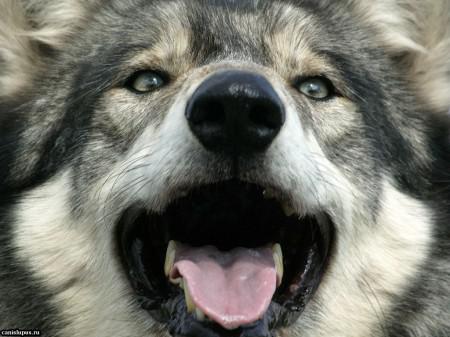
3)
Wolf.
Rhode Wolves (Lupus) combines wolves, coyotes, jackals, wild and domestic dogs - the largest representatives of the family of wolves. In addition, this family includes all foxes, arctic foxes, raccoon dogs and maned wolf. Like dogs, wolves are a very intelligent and easy to train. In addition, each wolf special character: there are cautious, bold or arrogant, they stay in wolf society freely and naturally, and others are not seen and not heard.

4)
Wolves live in the mountains, forests and plains of the northern hemisphere. Like all living things, they say biologists, is occupied in the wild ecological niche. In areas of its wolves are very much the largest group of predators that prey on large mammals.
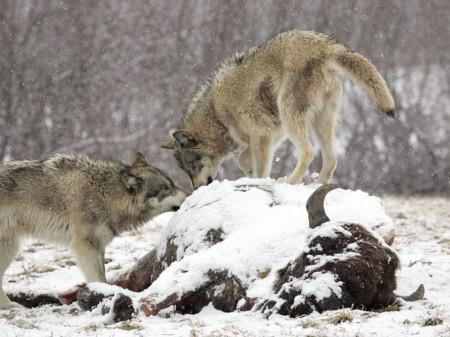
5)
Wolf - great?
"Big" - not very suitable for the determination of the wolf. Typically, the male wolf weighs about 50 kilograms, a wolf - 5 kilos less. Their height at withers - about 75 centimeters, and the length of the nose so tail reaches 1, 5 - 2 meters. Living in the pack
Wolves - social animals: they live in families. Every pack has a "roster", and in it each has its place. Strong and aggressive wolves Verkhovod, and those who need a steady hand, obey them. Wolf pack - group of animals linked by kinship and mutual sympathy - headed by the she-wolf and the wolf.
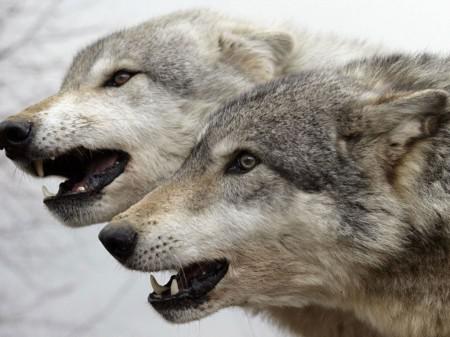
6)
The rest of its members - their offspring (from tiny puppies up to 2-3 year-olds). Typically wolf family is 6 - 7 and sometimes 15 animals. The strongest wolf in the pack becomes a leader. Edit it helps a friend - a she-wolf. To the others obeyed, leaders must have a strong character. All decisions regarding the life of the pack, take this pair. In a pack, where the order is following the leader, wolves among themselves usually do not fight. However, with strangers or trespass possessions lone wolf skirmishes are frequent.
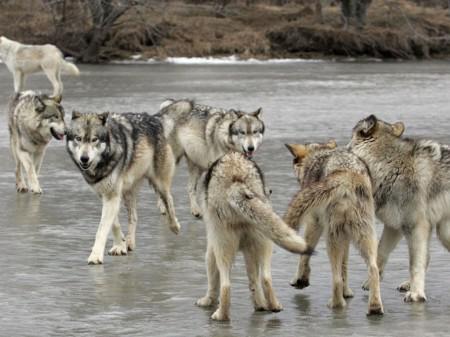
7)
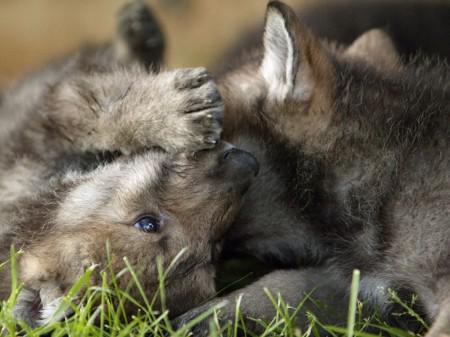
8)
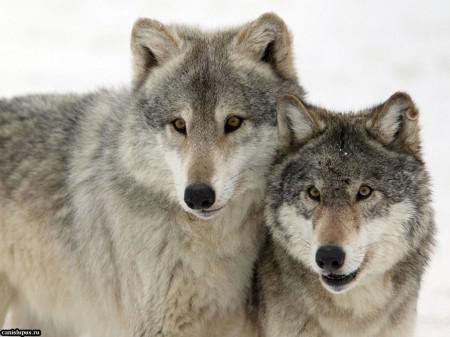
9)
Each wolf pack hunts only on its territory. The home team is strictly protected and labeled it, alerting the neighbors that they should stay away. Any intruder will be punished.
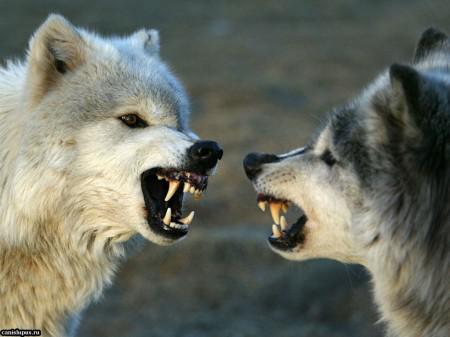
10)
In large flocks often it happens that some wolf hounded all his relatives. Sometimes outcast becomes unbearable, and he had to leave the flock. Why human loner called lone wolf? Because it resembles a wolf, who retired from the pack and is living alone. Over time, changes occur in the pack. Applicants for the role of the leader in the pack and are waiting in the wings. Other wolves grew up, go to roam alone. But they can create their own flock, if they are lucky to meet a lonely wolf. If the wolf and the wolf want to rule the flock, they must be subordinate to the will of all its other members and get them to unquestioningly carry out the laws.
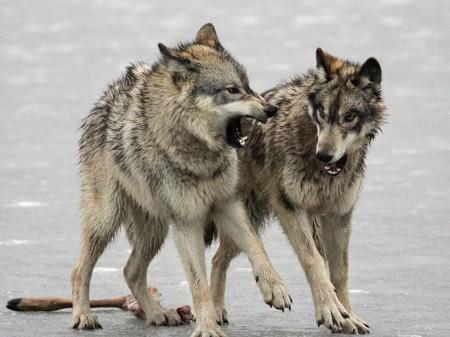
11)
The leader of the pack dominates males, while his girlfriend keeps order among wolves. The leaders constantly remind their "slave" who is the owner of a flock: they growl, bite, chase and even knocked down, preferring done it in front of the pack.
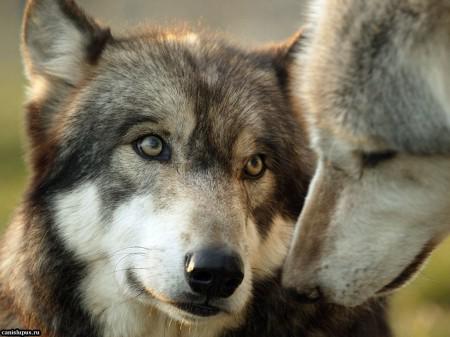
12)

13)
One harsh gaze of the leader or his girlfriend enough to those to whom it is aimed, obedient. Obsequiously grinning wolf tumbled to the ground, and then, if possible, to run away stealthily. Sometimes they go to the back, as if to say: we know who are the most important.

14)
The way the wolf holds the tail, talks about his position in the pack. Leaders have raised it high, have their "cast" is omitted, and standing at the lowest level in the wolf family draw in the tail.
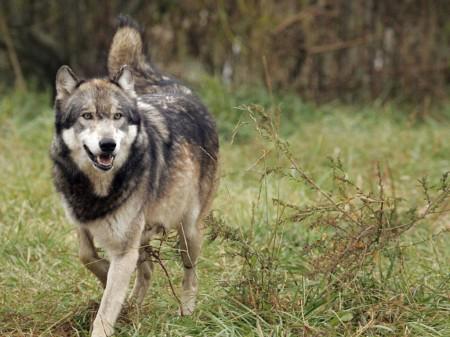
15)
The members of the pack to the leader evince love and respect in the welcoming ceremony. Crawling with ears laid back and smoothed hair they approach to the leader or to his girlfriend, licking and gently biting his face.
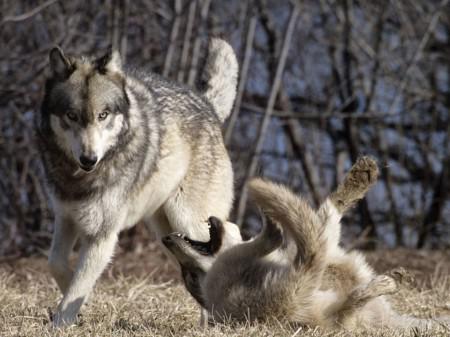
16)
Wolves - one of the most loyal animals, they are very attached to their pack mates. They express their feelings facial expressions and body movements. "Wolf's language" rallies pack and helps it act together. The tide of tenderness wolves lick each other and rub their noses.

17)
The tail of the wolf and the need to express their feelings. If the tail is bullied and the tip is slightly curved, which means that the wolf is quite sure of himself. In a friendly mood of the wolf's tail is omitted, but the tip of it looking up.
The wolf with tail between its legs, or is afraid of something, or so says his sympathy.

18)
Muzzle wolves are very expressive. Frightened, the wolf presses the ears and portrays a smile. Enraged Wolf its teeth and ears standing upright spins forward. Sensing danger, he takes away his ears back and shows his teeth and his tongue. Comrades understand how to behave in order to preserve peace in the pack.

19)
Natural Born Hunters.
Wolves created for hunting nature. In winter, the wolf in the snow left a neat footprints - he puts the hind leg just behind the front. With this gait it can run on any terrain and even in deep snow.

20)
Weapons wolf - it teeth. They were in his mouth as much as 42. Ahead stick 4 sharp curves of 5-centimeter fangs - two on top and bottom. They wolf can bite through tight skin of the victim. A predatory or carnivorous, the teeth - the so-called cheek teeth of predators - adult wolf bite even moose femur.
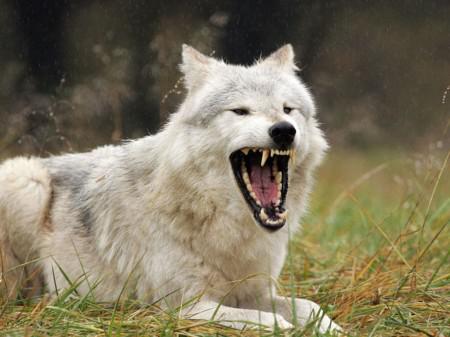
21)
Hunter needed a subtle hearing, and in this respect the wolves lucky. Hearing the noise, they Send the Prince ears and determine where the sound comes from. The sound source can be located a few kilometers away. Wolves hunt almost silently, because they run at your fingertips. Just as horses and cats, wolf heel touches the ground.
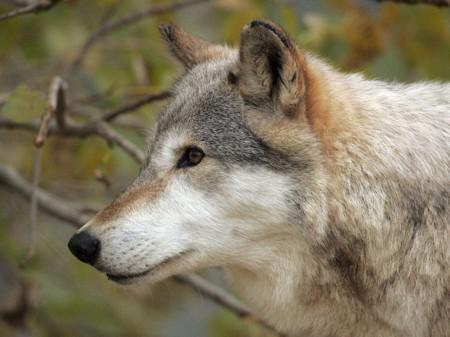
22)
He has strong legs and muscular sprawling gait, and he can long trot at a speed of 9 km / h, and in the pursuit of deer and elk to accelerate to 60 km / h.
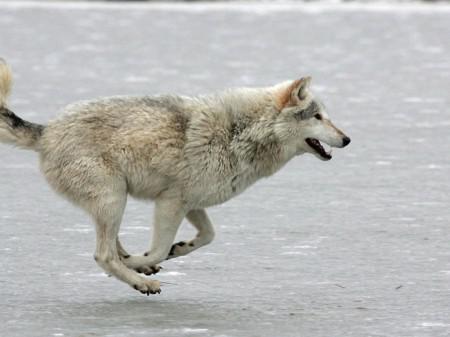
23)
On the hunt nose, ears and not the eyes or the first wolf tells where to look for prey. As they catch the scent of the wind, even the smallest animal in 1-2 kilometers away, when he had not yet heard and not seen. Through keen sense of smell wolves can chase the victim on the trail.
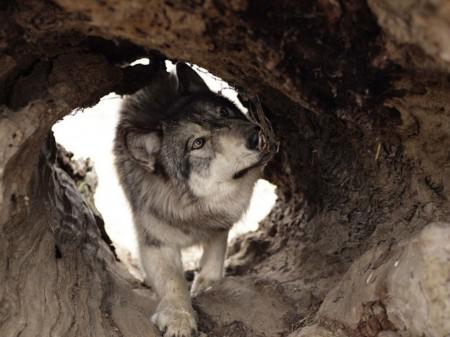
24)
Frost wolf protects the thick fur of up to 8 centimeters. Closest to the body layer of fur - an undercoat and an outer formed rigid, long, black at the ends of guard hairs. They repel water, and the undercoat does not get wet. This coat with fur lining the wolf is not terrible not the weather.
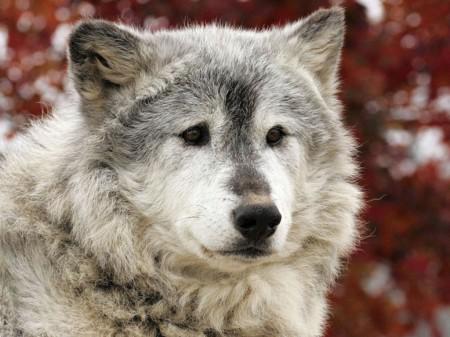
25)
A flock of hunting.
Wolves - carnivorous (or predatory) animals. They hunt in groups. Hungry wolves to be satisfied, sometimes enough and small animal - the beaver, rabbits, mice or birds.
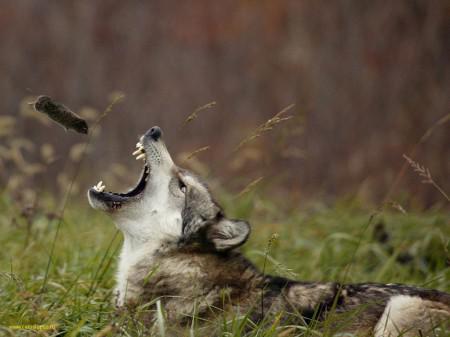
26)
But the pack is not enough, it needs large prey - deer, elk or ram. They are not for nothing called the nurses - in fact, as a rule, their victims are old, sick or inexperienced animals. With a sick animal disappears hearth disease; if you killed the old beast, young and strong gets more food. This biological regulation of number contributes to the survival of strong, healthy animals as hunters, and among their potential victims. Although wolves are considered to be ruthless, fortune ends only one in ten of their hunting.

27)
It happens that, after spending three days on the stalking and harassment herds of deer or elk, wolves manages to kill a few animals. Why is that? Fleet-footed deer can escape, and elk - rebuff: this 600-pound giant with sharp horns and heavy hooves costs nothing to break the wolf skull. Wolves can go without food for two weeks, but if the hunt was lucky they naedyatsya to satiety. For every adult wolf can eat up to 10 kilograms of meat! Sometimes wolves hiding part of half-eaten prey reserve - dragged into a hole and throw something on top. In the case of unsuccessful hunt they return to this cache, and dig a hidden dinner. Survival of the pack depends on the size of its hunting grounds, so the wolves to protect them for life and death.
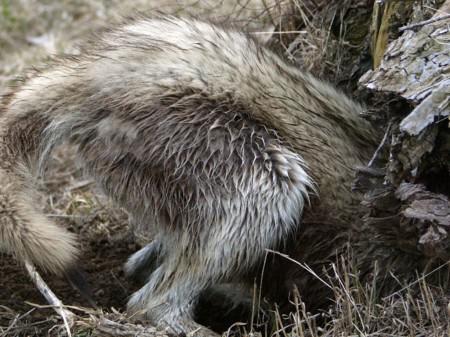
28)
The boundaries of the territory (it is 50-1500 sq. Km, depending on what animals to hunt a pack), wolves represent odorous labels - sprayed urine stumps and large rocks - and alert neighbors of their rights howling.

29)
Wolf's fun and games.
Wolves are not always hunting, and are ferocious growl. The first thing that will make the wolf, filling the stomach - and a good roll up into a ball vzdremnet. Waking up, happy to frolic.
If he wants to play, he invited to join him and relatives. Low limping on front paws to the ground, he approached them and, wagging his tail, say, "Oh, please!" No answer? Then that would attract attention to himself, he will start jumping from side to side, just like a dog.
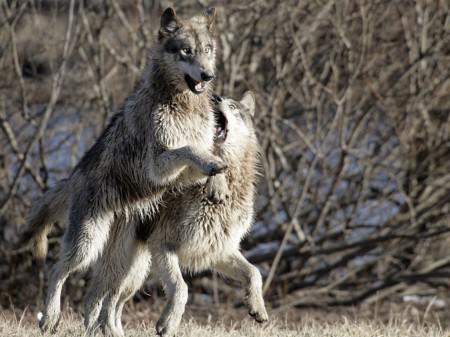
30)
Wolves and humans.
Who is not afraid of bad wolf? Since childhood, when we read the fairy tale "The Three Little Pigs," "Little Red Riding Hood" and "The Wolf and the Seven Little Kids", we learned by rote, that wolves evil and scary. In fact, they do not cause harm to people. But in spite of this, people are killed them.

31).
ONCE Wolves inhabit all of North America, Europe and Asia.
But because of the systematic destruction of their almost gone.
Thank you.)))
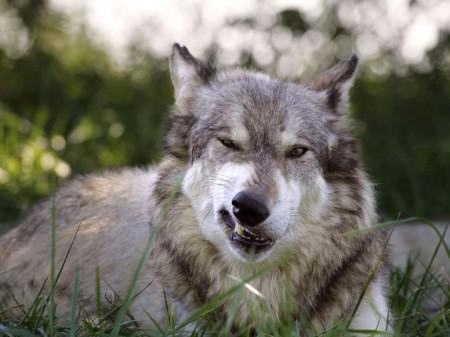
Source:

So. 1)
What do people know about the wolves? The fact that they are fierce and dangerous, treacherous and insidious. What they should be destroyed. So think of wolves, those who of them did not know anything. In fact, wolves rarely attack humans. Like all predators, they hunt, what to feed themselves and live their lives, trying to stay away from people. I invite you to lift the veil of secrecy and plunge into the mysterious world - the world of the Wolf.

2)
The ancestors of dogs.
Wolves live in the world for more than a million years. There were they from carnivorous predators that lived 100 million years ago and 20 million years ago from the wolf took the dog.

3)
Wolf.
Rhode Wolves (Lupus) combines wolves, coyotes, jackals, wild and domestic dogs - the largest representatives of the family of wolves. In addition, this family includes all foxes, arctic foxes, raccoon dogs and maned wolf. Like dogs, wolves are a very intelligent and easy to train. In addition, each wolf special character: there are cautious, bold or arrogant, they stay in wolf society freely and naturally, and others are not seen and not heard.

4)
Wolves live in the mountains, forests and plains of the northern hemisphere. Like all living things, they say biologists, is occupied in the wild ecological niche. In areas of its wolves are very much the largest group of predators that prey on large mammals.

5)
Wolf - great?
"Big" - not very suitable for the determination of the wolf. Typically, the male wolf weighs about 50 kilograms, a wolf - 5 kilos less. Their height at withers - about 75 centimeters, and the length of the nose so tail reaches 1, 5 - 2 meters. Living in the pack
Wolves - social animals: they live in families. Every pack has a "roster", and in it each has its place. Strong and aggressive wolves Verkhovod, and those who need a steady hand, obey them. Wolf pack - group of animals linked by kinship and mutual sympathy - headed by the she-wolf and the wolf.

6)
The rest of its members - their offspring (from tiny puppies up to 2-3 year-olds). Typically wolf family is 6 - 7 and sometimes 15 animals. The strongest wolf in the pack becomes a leader. Edit it helps a friend - a she-wolf. To the others obeyed, leaders must have a strong character. All decisions regarding the life of the pack, take this pair. In a pack, where the order is following the leader, wolves among themselves usually do not fight. However, with strangers or trespass possessions lone wolf skirmishes are frequent.

7)

8)

9)
Each wolf pack hunts only on its territory. The home team is strictly protected and labeled it, alerting the neighbors that they should stay away. Any intruder will be punished.

10)
In large flocks often it happens that some wolf hounded all his relatives. Sometimes outcast becomes unbearable, and he had to leave the flock. Why human loner called lone wolf? Because it resembles a wolf, who retired from the pack and is living alone. Over time, changes occur in the pack. Applicants for the role of the leader in the pack and are waiting in the wings. Other wolves grew up, go to roam alone. But they can create their own flock, if they are lucky to meet a lonely wolf. If the wolf and the wolf want to rule the flock, they must be subordinate to the will of all its other members and get them to unquestioningly carry out the laws.

11)
The leader of the pack dominates males, while his girlfriend keeps order among wolves. The leaders constantly remind their "slave" who is the owner of a flock: they growl, bite, chase and even knocked down, preferring done it in front of the pack.

12)

13)
One harsh gaze of the leader or his girlfriend enough to those to whom it is aimed, obedient. Obsequiously grinning wolf tumbled to the ground, and then, if possible, to run away stealthily. Sometimes they go to the back, as if to say: we know who are the most important.

14)
The way the wolf holds the tail, talks about his position in the pack. Leaders have raised it high, have their "cast" is omitted, and standing at the lowest level in the wolf family draw in the tail.

15)
The members of the pack to the leader evince love and respect in the welcoming ceremony. Crawling with ears laid back and smoothed hair they approach to the leader or to his girlfriend, licking and gently biting his face.

16)
Wolves - one of the most loyal animals, they are very attached to their pack mates. They express their feelings facial expressions and body movements. "Wolf's language" rallies pack and helps it act together. The tide of tenderness wolves lick each other and rub their noses.

17)
The tail of the wolf and the need to express their feelings. If the tail is bullied and the tip is slightly curved, which means that the wolf is quite sure of himself. In a friendly mood of the wolf's tail is omitted, but the tip of it looking up.
The wolf with tail between its legs, or is afraid of something, or so says his sympathy.

18)
Muzzle wolves are very expressive. Frightened, the wolf presses the ears and portrays a smile. Enraged Wolf its teeth and ears standing upright spins forward. Sensing danger, he takes away his ears back and shows his teeth and his tongue. Comrades understand how to behave in order to preserve peace in the pack.

19)
Natural Born Hunters.
Wolves created for hunting nature. In winter, the wolf in the snow left a neat footprints - he puts the hind leg just behind the front. With this gait it can run on any terrain and even in deep snow.

20)
Weapons wolf - it teeth. They were in his mouth as much as 42. Ahead stick 4 sharp curves of 5-centimeter fangs - two on top and bottom. They wolf can bite through tight skin of the victim. A predatory or carnivorous, the teeth - the so-called cheek teeth of predators - adult wolf bite even moose femur.

21)
Hunter needed a subtle hearing, and in this respect the wolves lucky. Hearing the noise, they Send the Prince ears and determine where the sound comes from. The sound source can be located a few kilometers away. Wolves hunt almost silently, because they run at your fingertips. Just as horses and cats, wolf heel touches the ground.

22)
He has strong legs and muscular sprawling gait, and he can long trot at a speed of 9 km / h, and in the pursuit of deer and elk to accelerate to 60 km / h.

23)
On the hunt nose, ears and not the eyes or the first wolf tells where to look for prey. As they catch the scent of the wind, even the smallest animal in 1-2 kilometers away, when he had not yet heard and not seen. Through keen sense of smell wolves can chase the victim on the trail.

24)
Frost wolf protects the thick fur of up to 8 centimeters. Closest to the body layer of fur - an undercoat and an outer formed rigid, long, black at the ends of guard hairs. They repel water, and the undercoat does not get wet. This coat with fur lining the wolf is not terrible not the weather.

25)
A flock of hunting.
Wolves - carnivorous (or predatory) animals. They hunt in groups. Hungry wolves to be satisfied, sometimes enough and small animal - the beaver, rabbits, mice or birds.

26)
But the pack is not enough, it needs large prey - deer, elk or ram. They are not for nothing called the nurses - in fact, as a rule, their victims are old, sick or inexperienced animals. With a sick animal disappears hearth disease; if you killed the old beast, young and strong gets more food. This biological regulation of number contributes to the survival of strong, healthy animals as hunters, and among their potential victims. Although wolves are considered to be ruthless, fortune ends only one in ten of their hunting.

27)
It happens that, after spending three days on the stalking and harassment herds of deer or elk, wolves manages to kill a few animals. Why is that? Fleet-footed deer can escape, and elk - rebuff: this 600-pound giant with sharp horns and heavy hooves costs nothing to break the wolf skull. Wolves can go without food for two weeks, but if the hunt was lucky they naedyatsya to satiety. For every adult wolf can eat up to 10 kilograms of meat! Sometimes wolves hiding part of half-eaten prey reserve - dragged into a hole and throw something on top. In the case of unsuccessful hunt they return to this cache, and dig a hidden dinner. Survival of the pack depends on the size of its hunting grounds, so the wolves to protect them for life and death.

28)
The boundaries of the territory (it is 50-1500 sq. Km, depending on what animals to hunt a pack), wolves represent odorous labels - sprayed urine stumps and large rocks - and alert neighbors of their rights howling.

29)
Wolf's fun and games.
Wolves are not always hunting, and are ferocious growl. The first thing that will make the wolf, filling the stomach - and a good roll up into a ball vzdremnet. Waking up, happy to frolic.
If he wants to play, he invited to join him and relatives. Low limping on front paws to the ground, he approached them and, wagging his tail, say, "Oh, please!" No answer? Then that would attract attention to himself, he will start jumping from side to side, just like a dog.

30)
Wolves and humans.
Who is not afraid of bad wolf? Since childhood, when we read the fairy tale "The Three Little Pigs," "Little Red Riding Hood" and "The Wolf and the Seven Little Kids", we learned by rote, that wolves evil and scary. In fact, they do not cause harm to people. But in spite of this, people are killed them.

31).
ONCE Wolves inhabit all of North America, Europe and Asia.
But because of the systematic destruction of their almost gone.
Thank you.)))

Source:
Tags
See also
9 facts about the game «Super Mario»
What will be the end of the world?
Brain tricks
Stunning 60 "hacks" of the brain that will make your life better
True or false, continued
Travel Kemerovo region, or as we did not get to the mountain under heaven teeth
Children's books Nazi Germany (42 photos)
Chinese shop (34 photos)
Travel to Afghanistan on a bicycle

















